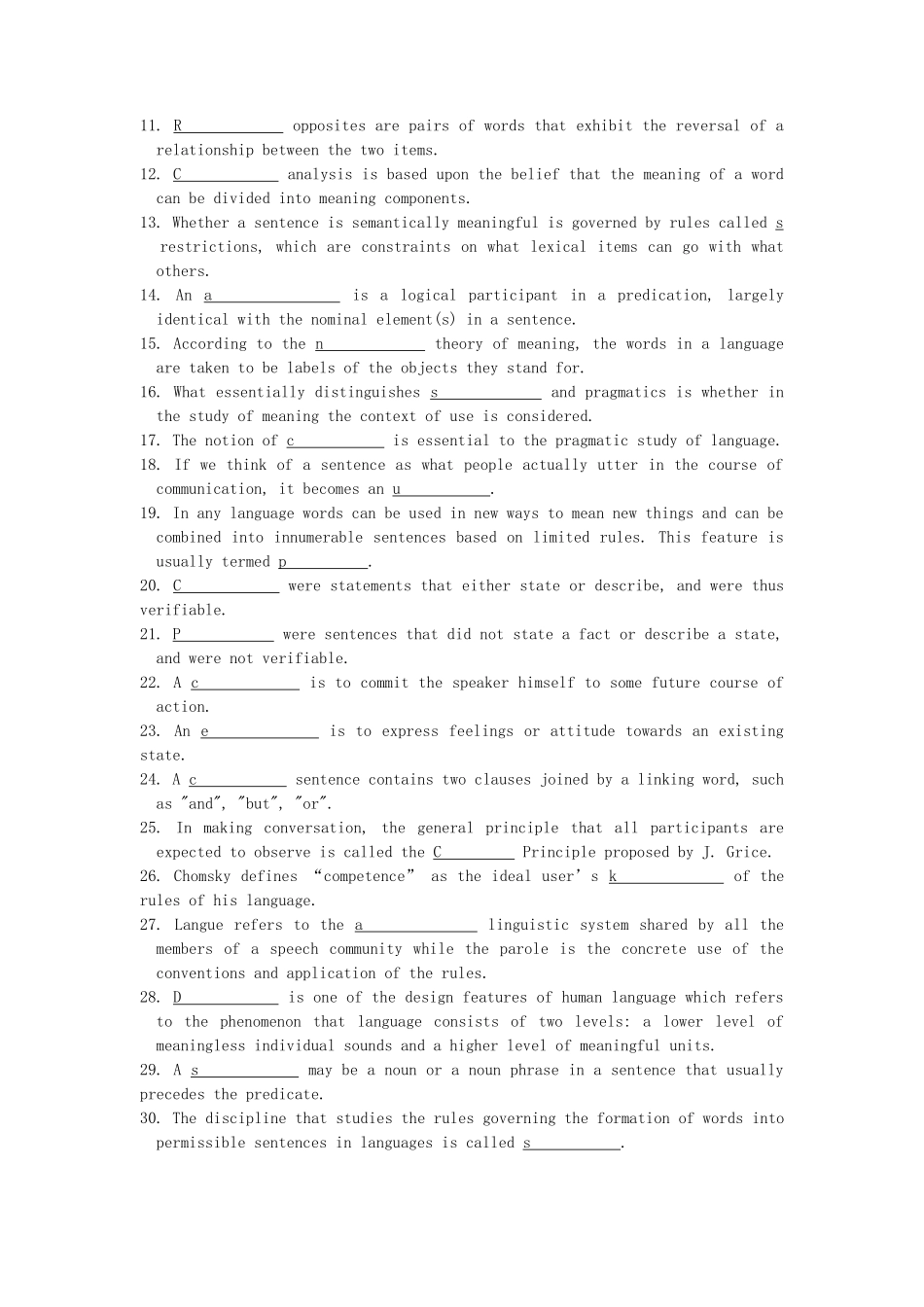2020 浙江杭州师范大学普通语言学考研真题I. Decide whether the following statements are true or false. (每小题 2 分,共 20分)1.Writing is the primary medium for all languages.2.We were all born with the ability to acquire language, which means the details of any language system can be genetically transmitted.3.Only human beings are able to communicate.4.Speech and writing came into being at much the same time in human history.5.Morphemes are the units of language that are smaller than words.6.The meaning of a morpheme is called morph.7.F. de Saussure, who made the distinction between langue and parole in the early 20th century, was a French linguist.8.J.R. Firth held the view that “We shall know a word by the company it keeps.” This view is called conceptualism in semantic theory.9.Utterances always take the form of complete sentences.10. Suprasegmental phonology refers to the study of phonological properties of units larger than the segment-phoneme, such as syllable, word and sentence.II. Complete the following sentences by filling in the blanks with one word.(每小题 1 分,共 30 分)1. In the complex sentence, the incorporated or subordinate clause is normally called an e clause.2. Major lexical categories are o categories in the sense that new words are constantly added.3. Consonant sounds can be either voiced or voiceless, while all vowel sounds are v .4. That the denial of one member of two words implies the assertion of the other is the characteristic of c antonyms.5. While the meaning of a sentence is abstract and de-contextualized, that of an u_______ is concrete and context-dependent.6. S can be defined as the study of meaning. 7. The conceptualist view holds that there is no d link between a linguistic form and what it refers to. 8. R means what a linguistic form refers to in the real, physical world; it deals with the relationship between the linguistic element and the non-linguistic world of experience. 9. S features are the phonemic features that occur above the level of the segments. They include stress, tone, intonation, etc.10. When two words are identical in sound, but different in spelling and meaning, they are called h . 11. R opposites are pairs of words that exhibit the reversal of a relationship between the two items. 12. C analysis is based upon the belief that the meaning of a word can be divided into meaning components. 13. Whether a sentence is semantically meaningful is governed by rules called s restrictions, which are constraints on what lexical items can go with what others. 14. An a is a logical participant in a predication, largely identical with the nominal element(s) in a sentence. 15. According to the n theory of meaning, the words in a language are taken to be labels of the objects they stand for.16. What essentially distinguishes s and pragmatics is whether in the study of me...


